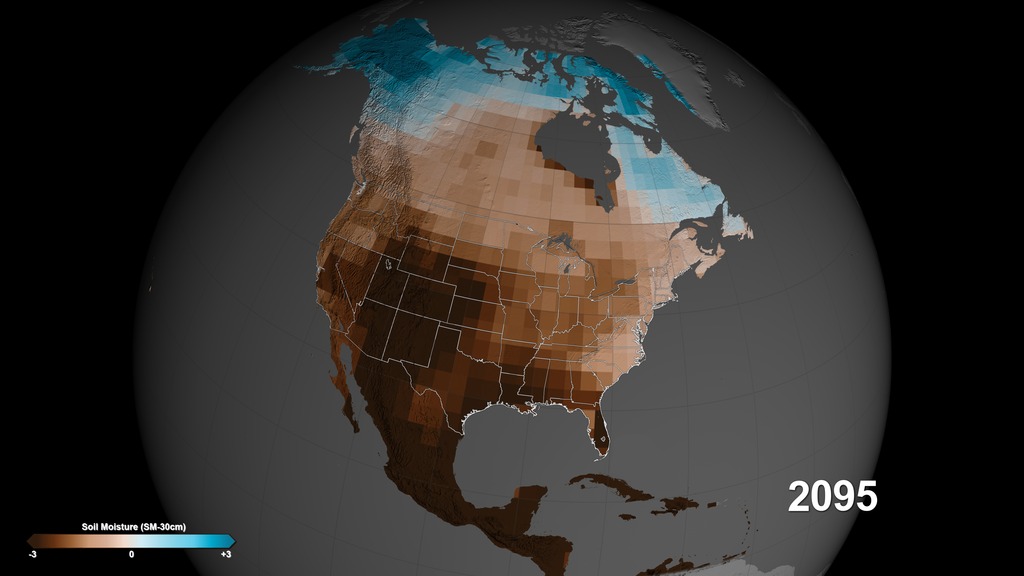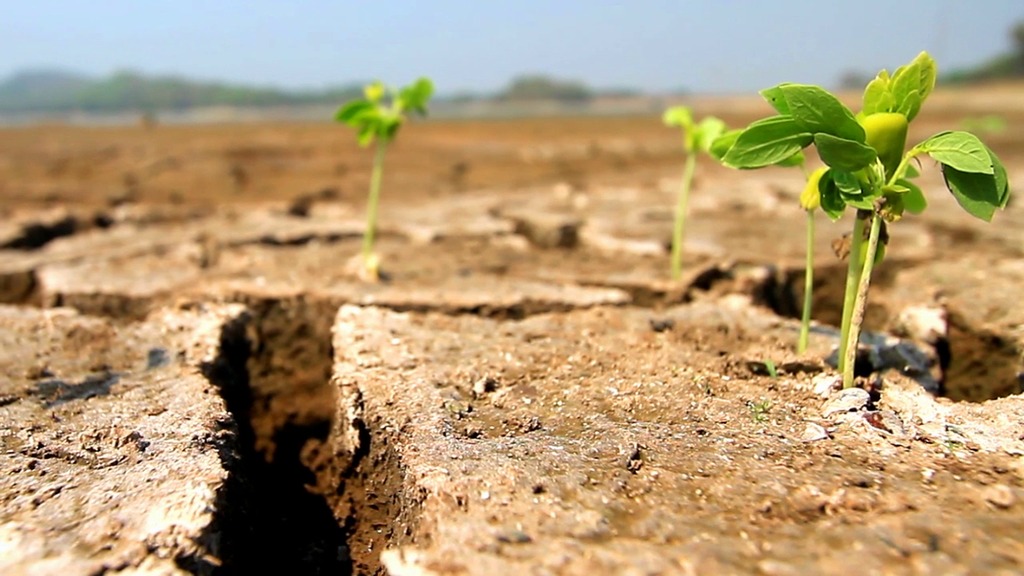Megadrought

Climate models predict longer and more severe droughts by the end of the century.
Drought has stricken much of the U.S. Southwest and Central Plains in recent years. But scientists now believe future droughts in the last half of this century could be the worst in the past millennium. Computer model projections of soil moisture show increases in human-produced greenhouse gas emissions are driving up the risk of megadroughts, droughts lasting more than 30 years. A team of researchers led by scientists at NASA’s Goddard Institute for Space Studies analyzed model results from two climate scenarios: a moderate scenario where greenhouse gas emissions stop increasing by the year 2050, and a high scenario where emissions continue to rise at their current rate through 2100. In both cases the team found conditions in the western United States are drier and the risk of decades-long drought increases. Watch the videos to see computer simulations that show how soil conditions in North America change under each emissions scenario.
This video shows soil moisture changes under the moderate emissions scenario. Browns indicate drier regions, while blues indicate wetter regions.
This video shows soil moisture changes under the high emissions scenario. Browns indicate drier regions, while blues indicate wetter regions.

Megadroughts have a 60 percent likelihood of occurring by the end of the century under the moderate emissions scenario, shown above.

Megadroughts have more than an 80 percent likelihood of occurring by the end of the century under the high emissions scenario, shown above.
For More Information
See NASA.gov
Credits
Please give credit for this item to:
NASA's Scientific Visualization Studio
-
Writer
- Ellen T. Gray (ADNET Systems, Inc.)
-
Animators
-
Greg Shirah
(NASA/GSFC)
- Cheng Zhang (USRA)
-
Greg Shirah
(NASA/GSFC)
-
Producer
- Jefferson Beck (USRA)
-
Scientists
- Benjamin I. Cook (NASA/GSFC GISS)
- Toby R. Ault (Earth and Atmospheric Sciences, Cornell University)
- Jason E. Smerdon (Ocean and Climate Physics, Lamont-Doherty Earth Observatory)
Release date
This page was originally published on Thursday, March 5, 2015.
This page was last updated on Wednesday, May 3, 2023 at 1:49 PM EDT.

